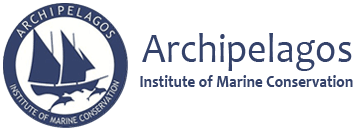In the deep waters of the Mediterranean, in particular the Aegean Sea, there is a secret world we risk losing before we even discover it. The Coralligenous Habitats of the Mediterranean, found at a depth of 70-250 meters, are some of the most complex and rich marine ecosystems in the Mediterranean. At the same time, however, they are some of the least studied marine ecosystems and most importantly, despite their great significance, they are not protected and as a result, face the daily threat of irreversible destruction.
As a first but important step for their research and conservation, and to raise awareness about the Coralligenous Habitats in the Aegean, the Archipelagos Institute of Marine Conservation is joining forces with the United Nations Regional Action Center for the Mediterranean (UNEP / MAP – SPA / RAC) and the Department of Biology of University of Essex, England, with the support of the French endowment fund Pure Ocean.
The work titled “Protecting Aegean Coralligene” that begins in the coming days aims to develop a new, relatively low-cost but scientifically reliable approach that uses state of the art research tools (ROV, multibeam sonar, biomass scanner, CTD). Thus it can be applied by small research vessels across the Mediterranean, contributing to the most effective research and conservation of these vital yet vulnerable marine habitats. At the same time, high-definition videos will be collected from impressive live corals but also from destroyed ones, with the aim of raising awareness within the public and the authorities in Greece and Europe.
The ultimate goal is to enforce a trawling ban to prevent irreversible damage in areas where there are coralligenous habitats. Although this is already required by national, EU and international legislation, it does not apply to the Greek seas or to a large part of the Mediterranean, as the relevant authorities never collected the necessary geospatial data (i.e. maps), defining where these vulnerable ecosystems were located.
The knowledge gaps related to their distribution, combined with increasing pressures, such as trawling, pollution and climate change, threaten these sensitive systems with devastating levels of damage. The destruction encountered by these habitats is considered irreversible as they are characterized by a very slow growth rate (<1 mm/year). It is noteworthy that, according to previous research, some of the coralligenous habitats of the Aegean are thought to exceed 7,500 years of age. Therefore, their mapping and monitoring is an urgent need throughout the Mediterranean, especially in Greece, to be able to enforce existing legislation for their conservation and to put an end to their reckless destruction.





